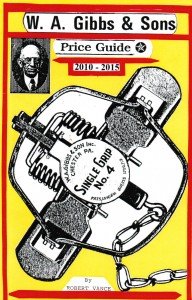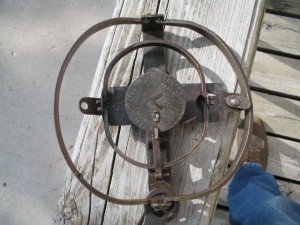This site is supported by you, the reader. If you make a purchase through one of my links, I may earn a small commission. Learn more here.
 The muskrat fur trade was big business in the early 1900’s, and Walter A. Gibbs of Dorchester County, Maryland used ambition and ingenuity to build a legacy in the trapping industry as a result. Not only did he catch thousands of muskrats for the fur market, he also developed innovative traps and techniques and pioneered the trade in live muskrats.
The muskrat fur trade was big business in the early 1900’s, and Walter A. Gibbs of Dorchester County, Maryland used ambition and ingenuity to build a legacy in the trapping industry as a result. Not only did he catch thousands of muskrats for the fur market, he also developed innovative traps and techniques and pioneered the trade in live muskrats.
W.A. Gibbs was a railroad retiree when he bought 650 acres of Maryland marshland for duck hunting. He soon discovered the potential the marsh held for muskrat trapping and it wasn’t long before he was a full time ‘rat trapper. Gibbs was an inventive man, and soon began designing and patenting his own traps to more effectively catch muskrats. He designed the Two Trigger, 111, Hawk, Dope and Single Grip traps among others.
With a booming muskrat market came intense trapping pressure, and with that pressure came more demand to reintroduce muskrats to depleted marsh lands. Gibbs began live trapping and shipping muskrats, and developed traps to capture and hold ‘rats alive. The most popular of these was probably the Armadillo trap, with an Armadillo-like segmente d dome that encased the muskrat and held it alive up out of the water. Gibbs is also known for developing the wire hide stretcher, which is the primary means of preparing muskrat pelts today.
d dome that encased the muskrat and held it alive up out of the water. Gibbs is also known for developing the wire hide stretcher, which is the primary means of preparing muskrat pelts today.
Gibbs manufactured traps from 1919-1936. In the early years, his manufacturing company in Chester, PA reportedly made over 2 million traps annually. The company was sold in 1936 to the Animal Trap Company of Lititz, PA. Gibbs then bought marshland in North Carolina, selling the Maryland land to his son, and continued trapping muskrats down there.
In addition to trapping muskrats and designing and manufacturing traps, Gibbs also did some serious work in his marshlands, designing and using equipment to dig canals for muskrat habitat and transportation, as well as building huge pens to hold live rats prior to shipping. Some of the signs of his work can still be seen in the North Carolina marshland today, which is part of a National Wildlife Refuge.
 Walter A. Gibbs was truly a pioneer and innovator in the trapping industry. He is reported to have caught over 75,000 muskrats during his years in the swamp. He also was a key innovator of many of the trapping designs we use today. Despite his impact to the trapping industry, though, very little of the history of W.A. Gibbs was preserved, so we know relatively little about him. He was an interesting man, to say the least.
Walter A. Gibbs was truly a pioneer and innovator in the trapping industry. He is reported to have caught over 75,000 muskrats during his years in the swamp. He also was a key innovator of many of the trapping designs we use today. Despite his impact to the trapping industry, though, very little of the history of W.A. Gibbs was preserved, so we know relatively little about him. He was an interesting man, to say the least.
Here are some more resources:
Building a Better Muskrat Trap
Trapperman discussion on Gibbs
i have gibbs double triggers made in hudson bay